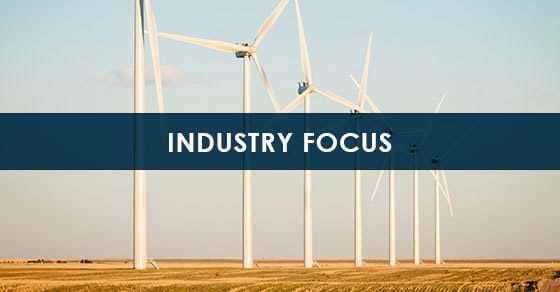Although less talked about than copper or aluminum, zinc is quietly slated to play a critical role in meeting future clean energy goals, a fact that was recently exemplified by its inclusion in Canada’s list of critical minerals.
Owing to its superior ability to protect metals against corrosion and a growing role in energy storage, experts predict that zinc will be an essential material in the evolving renewable energy landscape.
How Zinc Contributes to Renewable Energy Technologies
Zinc is important in renewable energy technologies primarily for two reasons:
Zinc Protects Against Corrosion
Zinc’s primary use is in galvanizing steel for protection from corrosion in everything from buildings and bridges to transmission towers and wind turbines.
Corrosion control may seem like nothing more than nuisance management, but it contributes significantly to a sustainable future by extending the life of steel significantly. By keeping equipment in service longer, fewer virgin resources are needed to continually replace that equipment. In the case of zinc, this equates to reduced steel production and subsequently, a decreased need in the energy to mine and process iron ore into steel.
In Wind Power
Wind power capacity has been steadily rising and is expected to continue along this trend. Market research firm Mordor Intelligence expects to see a CAGR higher than 8% up to 2026, with demand for alternative energy sources and the declining cost of wind power pushing growth.
Wind turbines rely heavily on zinc for corrosion protection, with more than the lion’s share (about 98%) of zinc demand from renewable energy coming from this sub-sector, according to the World Bank.
In Other Renewable Energy Endeavors
While zinc is primarily used in wind energy, it does contribute to other renewable technologies as well. In addition to being present in the solar cells themselves, zinc is also used as a protectant against corrosion in solar panel structures. And one must not forget the many steel structures that support the energy grid, such as transmission towers, also requiring protection against corrosion.
Zinc Holds Major Potential in Energy Storage Applications
Zinc also plays an important part in energy storage systems and batteries, both of which are crucial to being able to manage the variable loads associated with renewable energy sources.
Zinc improves upon existing energy storage and battery technologies by allowing for energy storage that is low cost, safe, and long-duration – all of which would be ideal for use in the growing trend of micro-grids. Long duration has been especially challenging in moving renewable energy storage progress forward, and zinc can economically provide days of backup power, according to the Zinc Battery Initiative.
Zinc-ion batteries have been garnering attention recently as an alternative to lithium-ion batteries, due to their increased safety and their stable supply chain. And a recent advancement by researchers has shown that zinc-air batteries can indeed be made rechargeable, making them a strong candidate for meeting future energy needs in electric vehicles and electronics, according to Science News.
Other Advantages Zinc Offers to a Renewable Energy Future
In addition to zinc’s role in protecting against corrosion and its potential for improved energy storage, zinc boasts a couple other key benefits that make it relevant to our renewable energy future:
Zinc is Infinitely Recyclable
Zinc can be recovered and reused again and again without a loss in quality. This translates to lower requirements for virgin resources, reduced energy consumption and emissions from virgin production, and a lightened load on landfills.
Zinc also already has a well-established recovery and recycling system, allowing a smooth transition to more widespread use.
Zinc is Widely Available
One of the best parts about zinc is that it is not subject to many of the challenges associated with some other metals in the sector. Zinc is readily available, it is a well-established industry built on proven technology, and it is not typically accompanied by geopolitical risks.
Conclusion
Zinc’s ability to protect energy infrastructure from corrosion and open the door to low-cost, long-duration (and safe) energy storage means it will play an increasingly important role in meeting the energy demands of the future, particularly as it is infinitely recyclable and widely available.
FEECO has been providing the industry’s best mining and mineral processing equipment for drying, agglomerating, high-temperature thermal processing, and handling since 1951. We offer a unique mineral process testing facility for conducting batch- and pilot-scale tests to assess feasibility, confirm proof of process, and engineer custom processing equipment, whether for zinc or other minerals and metals. For more information on our custom equipment or services around zinc, contact us today!


